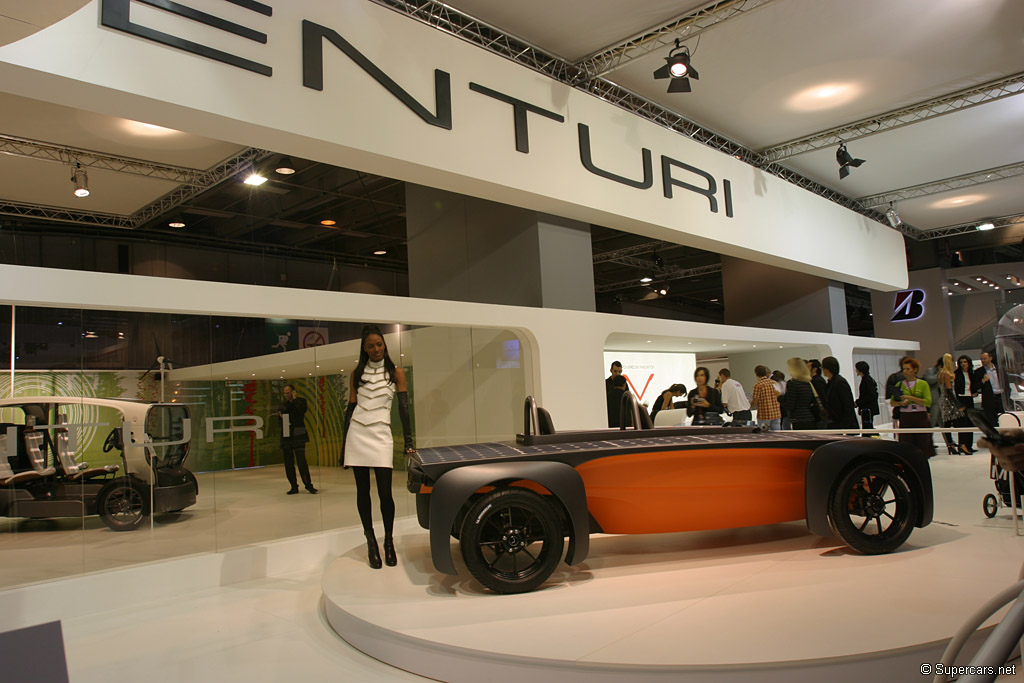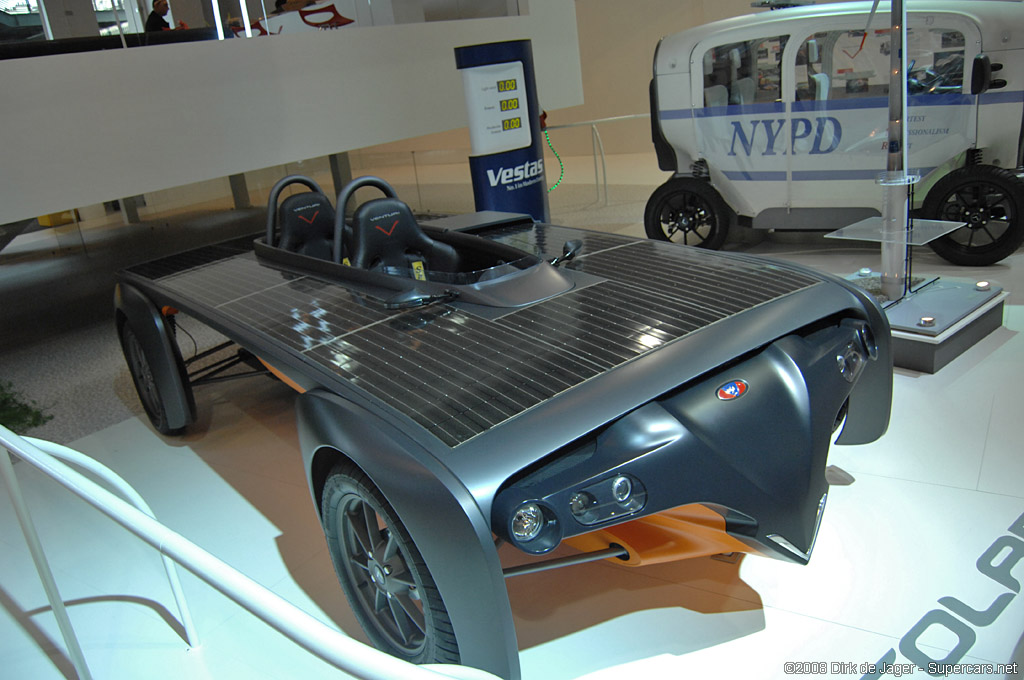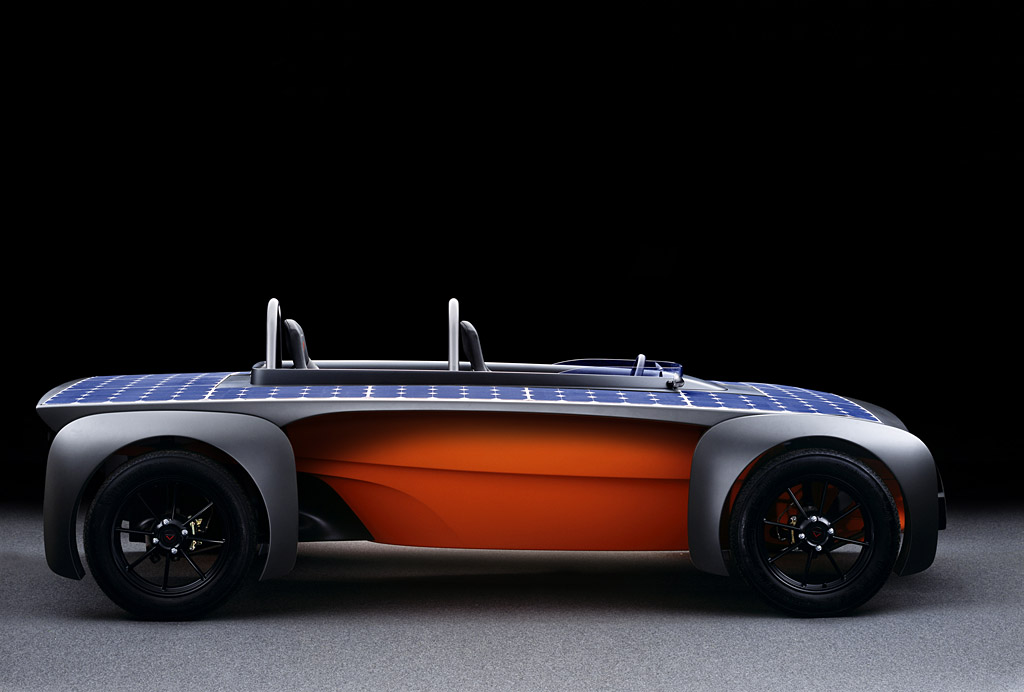2006 Venturi Astrolab
This is very first vehicle that consumes no fossil resources in order to work : the emissions of CO2 required for its construction will even be compensated for by environmental actions. A parallel can be drawn between Astrolab and a sailboat : both advance silently while making best use of the elements provided by Nature. And the piloting of both makes for sensations unlike any other.
To attain this level of performance while using very little energy, Astrolab has been designed like a Formula 1 : its carbon monocoque chassis is ultra-light and serves as an oversized protection cell ensuring the safety of its occupants in the event of a collision. Its profile recalls the aqua-dynamic design of great racing yachts.
With 3.6 m2 of photovoltaic cells giving an exceptional yield of 21%, and covered by a film composed of nano-prisms enabling denser concentration of solar energy, Astrolab is the first high-performance solar vehicle to be commercialised in the world.
Capable of working with very little energy (16 kWc engine) and of recharging even when in motion, this vehicle of another era does not need to be permanently exposed to the sun in order to move. Its last-generation NiMH Venturi NIV-7 batteries – liquid cooled – in fact enable it to restitute stored energy, whether solar or from the electricity supply, making it the first electro-solar hybrid vehicle.
With a top speed of 120 km/hr and autonomy of 110 km, Astrolab is a real Solar Commuter making extensive trips on a daily basis.
Made by order at a cost of 92,000 + VAT, Astrolab is a vehicle with a considerable technological head-start on all other productions worldwide. It meets the needs of people’s inter-urban travel, at the forefront of the best that is being achieved in terms of technology. The first vehicles are scheduled for delivery in January, 2008.
Optimised to incoporate its solar cells, the Astrolab?s design takes into account the effect of passengers’ weight on the vehicle?s dynamic behaviour. Very light when empty, the tandem architecture makes for perfect balance, whether the vehicle is occupied by one person or two.
Optimized to incorporate its solar cells, the Astrolab’s design takes into account the effect of passengers’ weight on the vehicle?s dynamic behaviour. Very light when empty, the tandem architecture makes for perfect balance, whether the vehicle is occupied by one person or two.
With Astrolab, Venturi has given priority to the solar solution as its energy conversion technology : all of its developments allow us to hope for even higher yields in the years to come. Within a 30-year perspective, Venturi is the only automobile manufacturer capable of presenting such a solution while ensuring new driving sensations and an essential aspect of automobiles.
In Detail
| engine | Asynchronousasynchronous Electric w/NIV-7 NiMH Battery Pack |
| power | 16.0 kw / 21.4 bhp @ 3500 rpm |
| bhp/weight | 76.43 bhp per tonne |
| torque | 50 nm / 36.9 ft lbs |
| body / frame | Carbon Fibre w/Front Rear Subframes |
| front tires | Michelin 130/90 R17 |
| rear tires | Michelin 130/90 R17 |
| f brake size | mm / in |
| r brake size | mm / in |
| f suspension | MacPherson |
| r suspension | MacPherson |
| curb weight | 280 kg / 617 lbs |
| wheelbase | 2500 mm / 98.4 in |
| front track | 1760 mm / 69.3 in |
| rear track | 1760 mm / 69.3 in |
| length | 3800 mm / 149.6 in |
| width | 1840 mm / 72.4 in |
| height | 1200 mm / 47.2 in |
| gear ratios | :1 |
| top speed | ~120 kph / 74.6 mph |
Above Images ©IMAGE CREDITS – Michel Zumbrunn for Venturi Automobiles















